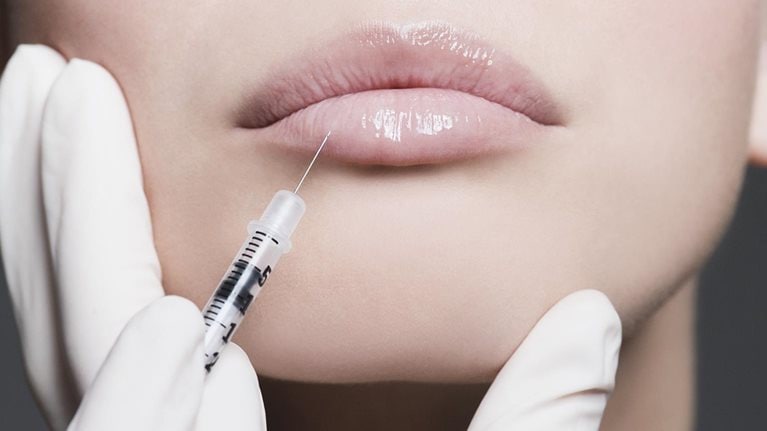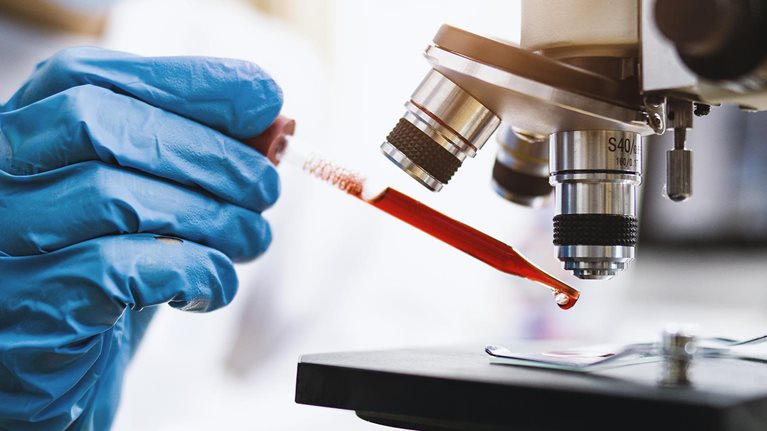Even at the depths of the COVID-19 pandemic, the future looked bright for the medical-aesthetics industry. As we reported in 2021, the industry was poised to grow by as much as 14 percent annually through 2026.1 This growth was due to an expanding patient base (thanks in part to increasing awareness and acceptance of aesthetics on social media), a proliferation of outlets providing aesthetic services, the expansion of indications, the adoption of new technologies, and new service delivery channels rising to meet consumer needs.
In 2022, we conducted a comprehensive survey in the United States to assess consumer sentiment and attitudes toward spending on medical aesthetics, particularly in light of the evolving macroeconomic environment.2 In this article, we draw from the results of that survey and the 2021 article and offer our perspectives on the present state of the medical-aesthetics industry by exploring the following questions:
- How has the market performed over the past two years?
- How resilient is the market, given previous challenges and current economic conditions?
- What are the opportunities for companies and investors?
Recent market trends in medical aesthetics
The market for medical aesthetics in Canada and the United States, which represents an outsize share of the global market, has enjoyed a steady climb since 2019, as illustrated by neuromodulator and dermal filler injectables3 (Exhibit 1), as well as energy-based devices for facial rejuvenation and hair removal. The market rebounded in 2021 following the dip in 2020 related to the COVID-19 pandemic.

Notably, neuromodulators (such as injectable Botox) have outperformed dermal fillers (such as hyaluronic acid fillers and biostimulators), likely because of higher price sensitivity, given economic uncertainty and competition from alternatives such as fat-grafting and platelet-rich-plasma treatments. Dermal fillers have also seen some backlash about “filler fatigue,” largely focused on hyaluronic acid fillers,4 which may have resulted in some of the market softening, as well as a relative shift toward biostimulators.
Given the attractive market dynamics, investment activity has continued across the value chain. Private equity acquisitions grew approximately 30 percent per annum from 2019 to 2021, with funds appearing to be executing upon provider roll-up strategies. Deals with a strategic buyer nearly doubled from 2019 to 2021, with providers also adding to their platforms and manufacturers expanding or diversifying their product portfolios. For example, Revance formed an exclusive distribution agreement for TEOXANE dermal fillers in 2020, Allergan acquired Luminera in 2020 for its dermal fillers, and Galderma acquired ALASTIN Skincare in 2022.5
Six trends that portend market resilience for medical aesthetics
The medical-aesthetics industry has demonstrated remarkable resilience over the past two decades. Its performance has tracked the S&P 500’s and even stayed steady relative to the rest of the market during the 2008 financial crisis. The only recent blip was in 2020, when patients had challenges accessing care during the pandemic lockdowns.
Our latest research points to six signs that the medical-aesthetics industry will remain resilient over the medium to long term.
1. Many consumers are still spending; they are just looking for more cost-effective products and treatments
Roughly 60 percent of respondents to the December 2022 McKinsey Aesthetics Consumer Survey expected to spend at least 10 percent less on medical aesthetics should a recession occur. This sentiment appears to have been driven by price sensitivity: nearly half of US consumers (approximately 46 percent) expressed a willingness to switch to lower-price brands or products. Only 7 percent of respondents across the neuromodulator, dermal filler, and facial-rejuvenation segments expected to stop their treatments entirely (Exhibit 2). As more consumers seek treatments from new, lower-cost service-delivery channels—an indication of volume resilience for brands—manufacturers and providers may need to explore innovative go-to-market models to capture these price-sensitive consumers.

2. Even amid financial constraints, many consumers remain brand loyal
Despite a general inclination to reduce spending, some respondents intended to stick with their current brands and treatments, as is the case for 52 percent of consumers who were receiving neuromodulator injections (such as Botox and Dysport). Fewer than 20 percent of respondents across all three categories intended to abandon their current products or treatment plans entirely.
3. An increasingly diverse consumer base is now more open to medical aesthetics
Several technological and societal trends play into the resilience of consumer demand for medical aesthetics and the subsequent growth and evolution of market dynamics. Among them is a widespread and dramatic shift regarding aesthetics and self-image. A market report published in 2022 revealed that 81 percent of consumers are more accepting of noninvasive aesthetic treatments than they were five years ago.6 Consumer segments have also expanded and become more diverse. For example, according to American Society of Plastic Surgeons research, between the turn of the century and 2018, 29 percent more males underwent cosmetic procedures overall and 72 percent more opted for minimally invasive procedures.7
Changes in consumer attitudes and behavior have been mirrored on social media, which has played an increasingly critical role along the full consumer funnel. For example, the American Academy of Facial Plastic and Reconstructive Surgery has noted that social media users are moving from aesthetic treatments to achieve the static “Instagram face” to seeking the more dynamic “TikTok face.” They also reported that 79 percent of facial plastic surgeons agree that consumer demand is increasing for procedures that help them look “better in selfies,” maintain previous procedures, and reduce signs of aging.
4. Manufacturers are innovating to meet growing consumer demand
Technological innovation—including patent filings for next-generation dermal fillers and biostimulators—has risen to meet the needs of an increasingly demanding, diverse, and discerning consumer base. Although the jury is still out on how well they will perform in the market long term, a few recent innovations are addressing some consumers’ most challenging pain points, including the maintenance of neuromodulator injections, the treatment of skin laxity, and severe acne.
Examples of recently approved medical-aesthetic innovations are Revance’s Daxxify and Galderma’s Alluzience, two new neuromodulator formulations; Cytrellis’s ellacor, a nonsurgical skin removal treatment for skin laxity in the mid- to lower face, and Cutera’s AviClear, a laser treatment of mild-to-severe acne.8
5. Channel proliferation offers more options to reach a wider array of consumers
Growth in consumer diversity and technological innovations is increasing heterogeneity across channels and provider types. This trend leads to increased complexity and new opportunities for manufacturers and service providers. Results from the global surveys we conducted in 2021 and 2022 provide a picture of channel proliferation.
The surveys also revealed varying levels of consumer loyalty (Exhibit 3). For example, patients of dermatologists were most likely to stick with their provider, who could leverage these trust-based relationships to broaden customers’ access to a range of aesthetic treatments. Meanwhile, fast-expanding medical spas and aesthetic clinics offer appealing options for shoppers seeking promotions and discounts, but their customers were less loyal than those treated by individual practitioners.

In such a fragmented provider landscape, manufacturers and service providers can implement tailored go-to-market strategies that blend traditional, higher-cost methods for consumer activation and retention with digitally enabled, more consumer-centric models that cater to new consumer segments and drive loyalty. Using advanced analytics or AI for customer insights and microsegmentation, companies can target specific consumer groups, understand their unmet needs, and adapt pricing dynamically. And although some services, such as injectables, will continue to be delivered in person, an increasing number of treatments, including at-home skincare and hair removal, are available through a hybrid model that includes robust online channels.
6. The market remains underpenetrated
Our analysis across all medical-aesthetics product segments indicates a high number of “fence sitters”—consumers who say they will try a product or treatment within the next five years, specifically including the next 12 months. Fence sitters are an important indicator of future growth potential in an industry.
When we compared fence-sitting data in the 2021 and 2022 surveys, we observed that the phenomenon remained unaffected by significant changes in the macroeconomic environment in the latter year—and in some cases, the trend is even more promising.
For example, in 2021, we found that 15 to 20 percent of respondents intended to use injectables (neuromodulators and dermal fillers) within the next five years, which would double the number of survey respondents who currently used those products at the time of the survey. Our 2022 findings (Exhibit 4) were consistent with those results. However, taking a closer look at the dermal filler segment, we noted that just as many respondents who hadn’t used dermal fillers recently intended to do so in the next 12 months. And looking ahead to five years, 11 percent of respondents said they intended to use dermal fillers, which would triple the number of current users at the time of the survey.

Opportunities for investors and companies in medical aesthetics
Despite the current uncertain macroeconomic climate, our research indicates that now could be an opportune time to capitalize on current and projected consumer demand for medical aesthetics and invest in innovations. Our previous analysis showed that healthcare manufacturers and providers that innovate during a crisis (such as the COVID-19 pandemic) and maintain their focus on growth and rapid adaptability tend to outperform the competition.
As medical-aesthetics channels continue to expand, investors may consider consolidating regional and local providers to create national and global chains to drive revenue and cost synergies through cross-sell and standardized operations.
And as consumer bases expand, providers could optimize the mix of products and treatments to include surgical aesthetics and at-home offerings, considering evolving preferences and the mixed effects of GLP-1 agonists. New business models, like subscriptions for neuromodulators and devices for facial rejuvenation, also present growth opportunities.
Opportunities also exist for manufacturers to advance consumer funnel management, value-based pricing, and digital engagement to educate providers and boost loyalty. Product innovations such as injectable exosomes and intradermally delivered mRNA for collagen replacement therapy can penetrate into new segments and boost market value. But they also pose a risk of cannibalizing current products, and their success will depend on the go-to-market strategy and on consumer adoption patterns.

